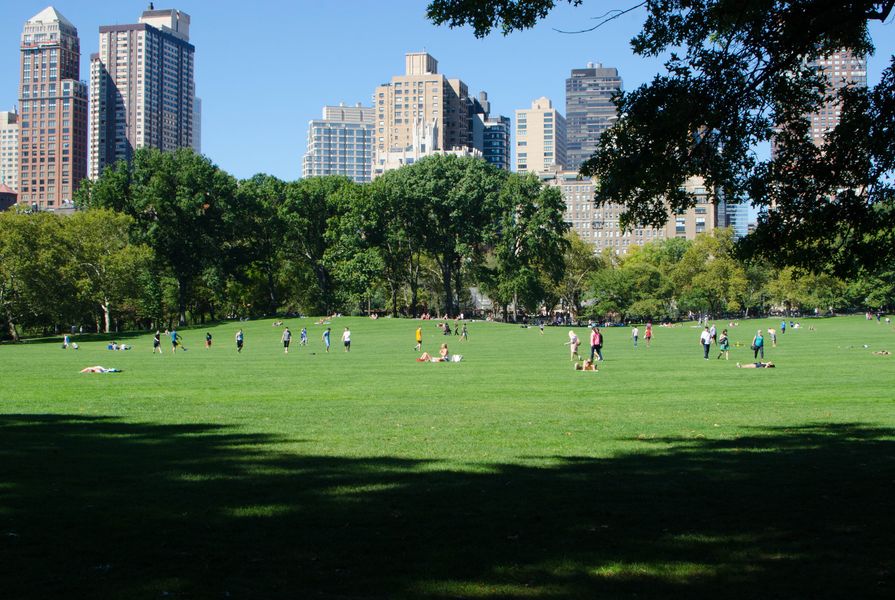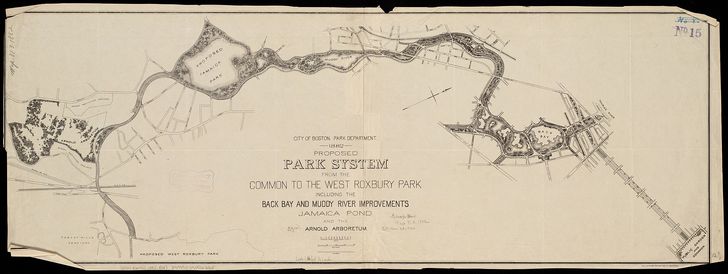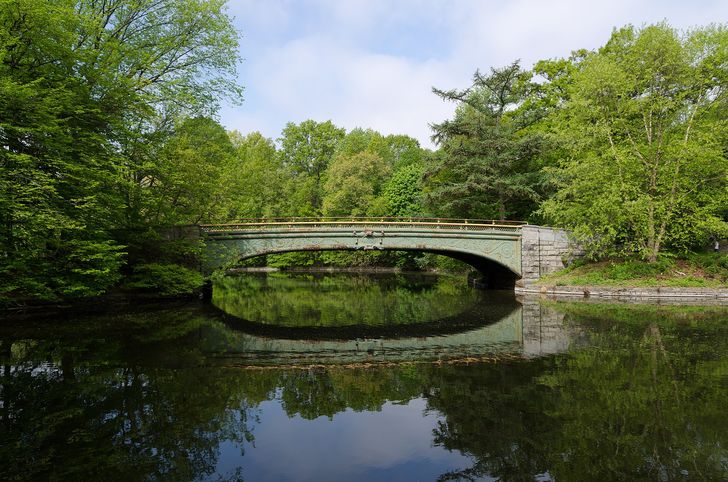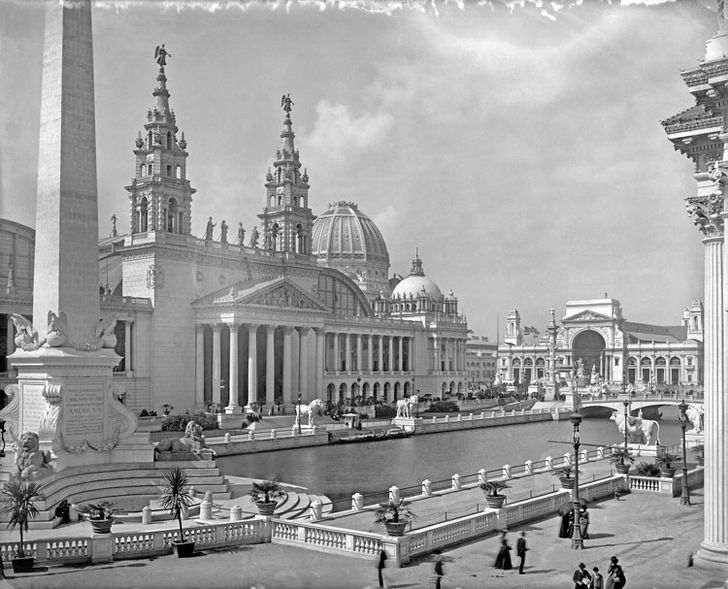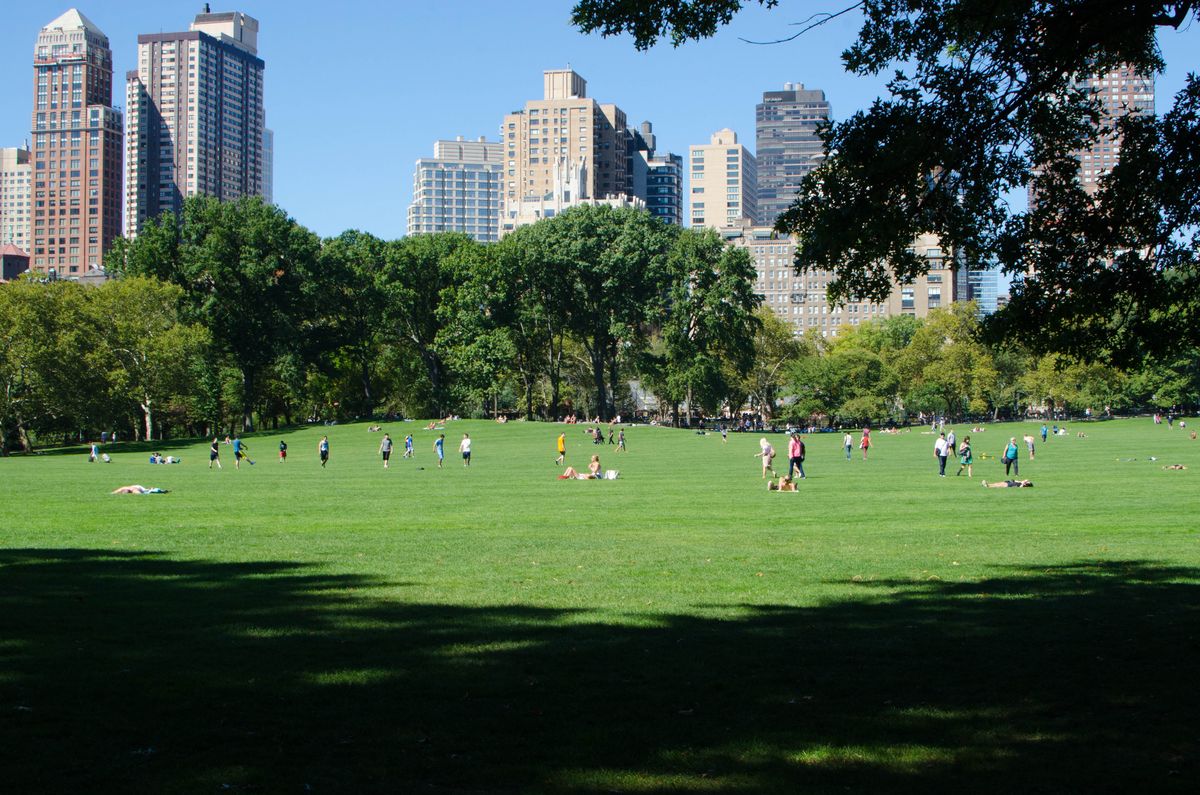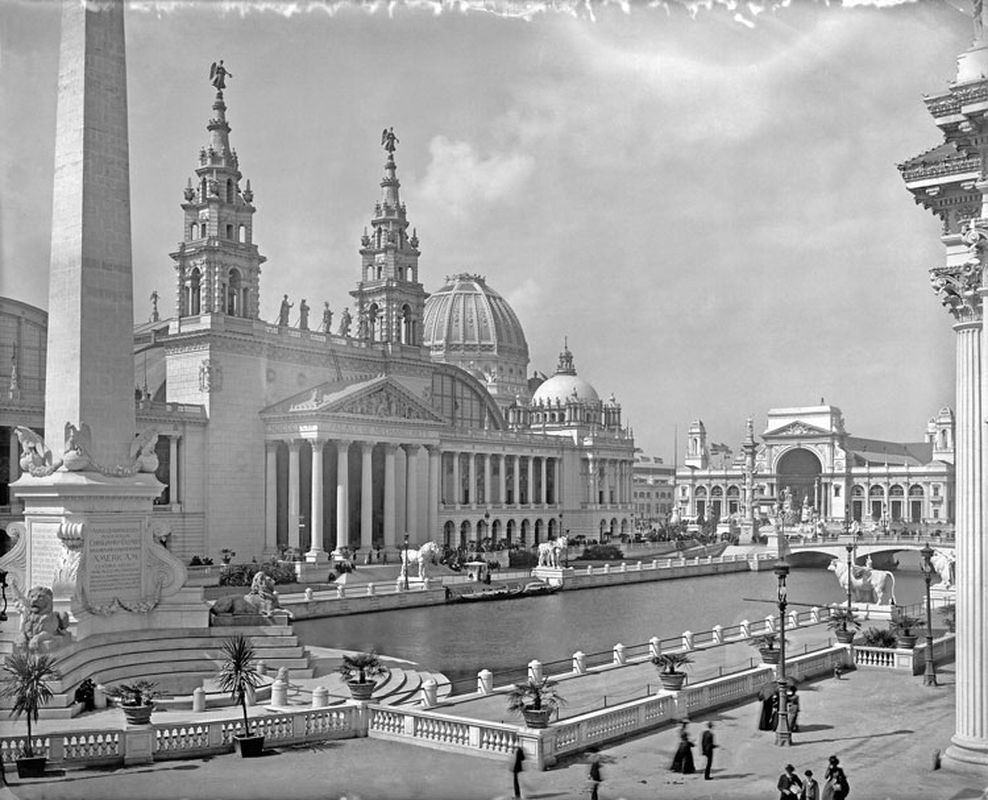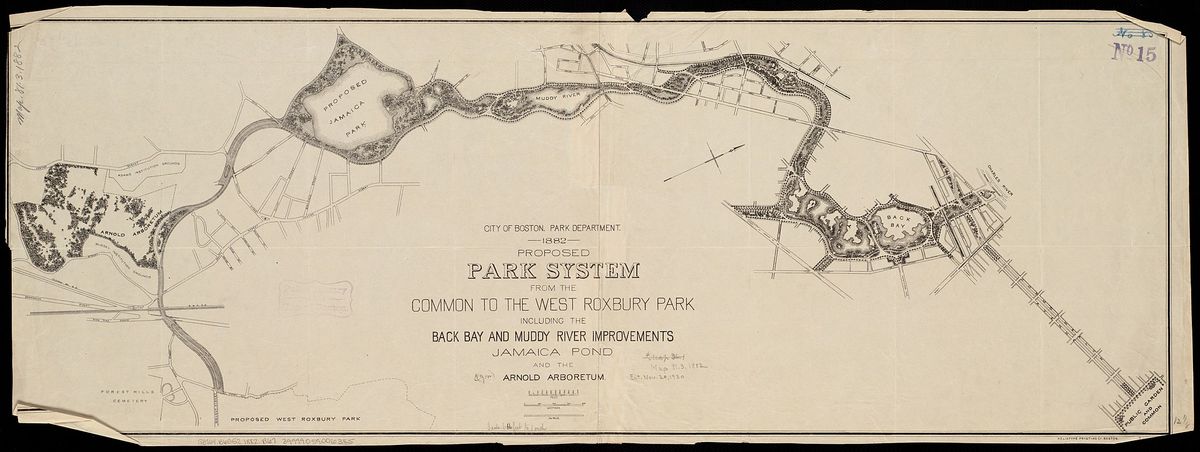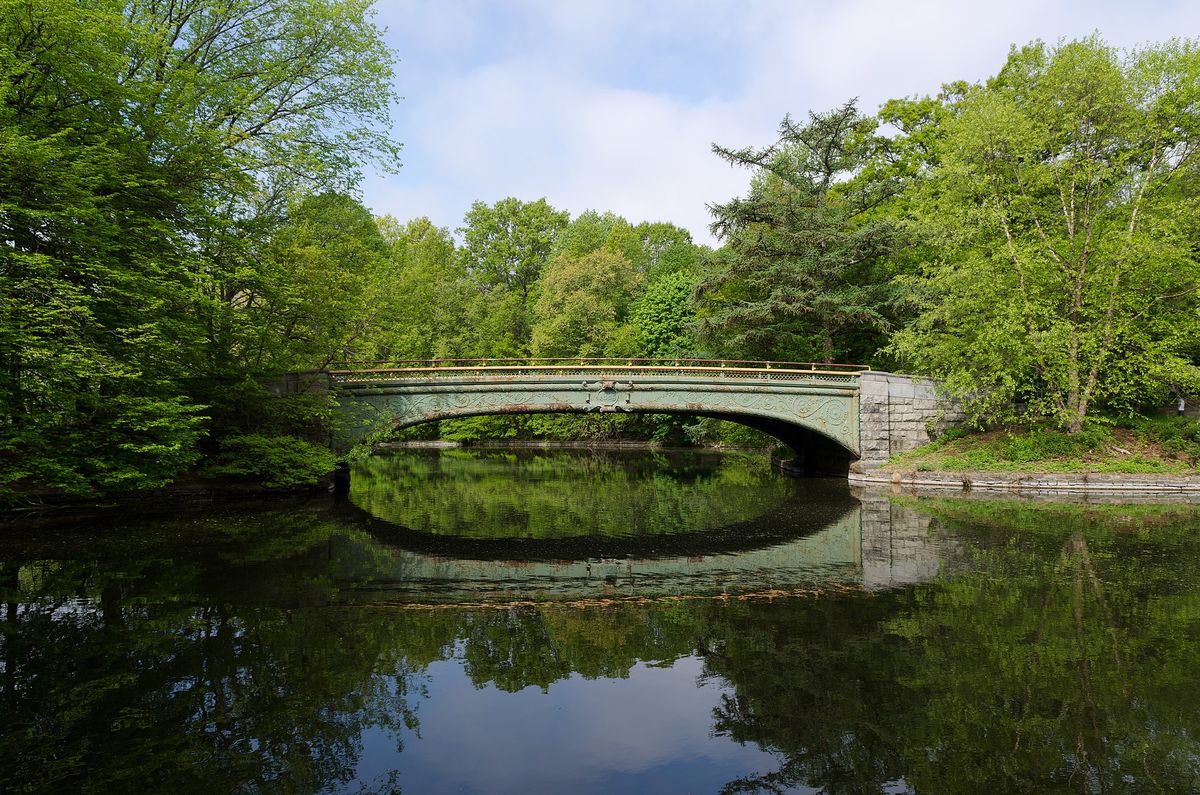26 April 2022 marks the 200th anniversary of the birth of Frederick Law Olmsted – farmer, surveyor, journalist, social justice advocate, environmentalist and, most importantly, landscape architect. Although he was born in the early decades of the nineteenth century, Olmsted’s knowledge, foresight, vision and work continue to inspire. What can we learn from the life and work of this nineteenth century polymath? How does his professional path have relevance to landscape architecture practice in the twenty-first century … and in Australia?
An early adopter of the professional title “landscape architect,” Olmsted was responsible for the design of some of North America’s most important public spaces, including New York’s Central Park and Prospect Park, both designed in partnership with the architect Calvert Vaux, as well as the Washington Capitol Grounds, and the Mount Royal Park in Montreal.
Olmsted’s 1882 plan for Boston’s Emerald Necklace.
Image: Frederick Law Olmsted
Olmsted was a true visionary, capable of imagining the opportunities inherent in landscape planning and development and perceptive in linking accessible and generously designed public open spaces to societal wellbeing. During his travels in England, Olmsted was inspired by the pastoral aesthetic of the school of English landscape design defined by curving carriageways and pathways, long vistas, informal scattered clumps of trees and grassy meadows. Beyond aesthetics, however, he was deeply impressed by the designation of Birkenhead Park as a “people’s park” and this idea became a guiding tenet for future urban park planning.
Well-recognized for park design and development, Olmsted also took on major appointments to envision and implement large-scale landscape planning and management. As the head of the commission for the Yosemite Valley in 1864, he championed the value of scenery and the importance of species conservation and promoted the idea of maximum public access with minimum environmental damage. His vision and actions led to the eventual establishment of Yosemite as one of the world’s first national parks in 1890. Touring the Southern states in the 1850s, he wrote extensively on the injustice of slavery and the poor economic and social conditions of Southern cities. During the American Civil War, as executive secretary of the US Sanitary Commission (forerunner of the Red Cross), Olmsted applied his administrative and project management skills to improve the organization and distribution of needed supplies and services for soldiers and civilians in military camps and hospitals.
Prospect Park, New York.
Image: King of Hearts, Wikicommons, CC-BY-SA-3.0
At the city scale, Olmsted’s landscape systems thinking is demonstrated in Boston’s Emerald Necklace; stretching over 11 kilometres, the seamlessly integrated chain of parks and waterways was a precursor to water sensitive urban design and the concept of blue/green infrastructure. As the consulting landscape architect for the 1893 World’s Columbian Exposition in Chicago, Olmsted instigated the selection of the lakefront site and designed its memorable public domain. He understood the importance of detail to the visitor experience, and the 500 parks and gardens designed by the Olmsted firm under his leadership, and later that of his sons, are exemplary in their resolution of materials, plants and spaces.
Many of the ideas Olmsted fostered remain central to contemporary landscape architecture practice: the need for urban dwellers to access nature and wildness; design as a sequence of spaces; the importance of passive and active recreation space; the value of large gathering and small intimate spaces; the use of plants to define space and enhance topography; the importance of circulation hierarchy; and the value of urban parks in providing opportunities for incidental social interactions.
Frederick Law Olmsted was the consulting landscape architect for the 1893 World’s Columbian Exposition in Chicago.
Olmsted’s parks are still beloved and heavily used because their designs manifest enduring values concerning the common good. The strength of their basic design structures has allowed them to be continually adapted to meet the changing societal needs of successive generations.
How did Olmsted do this? By being eternally curious, by learning and engaging in society and in his profession, by developing skills to work at multiple scales and by nurturing authentic collaborations.
As a profession we owe much to his legacy and his tireless advocacy for the environment and societal equality. So, on 26 April 2022 raise a toast to Frederick Law Olmsted, a true pioneer of landscape architecture.

